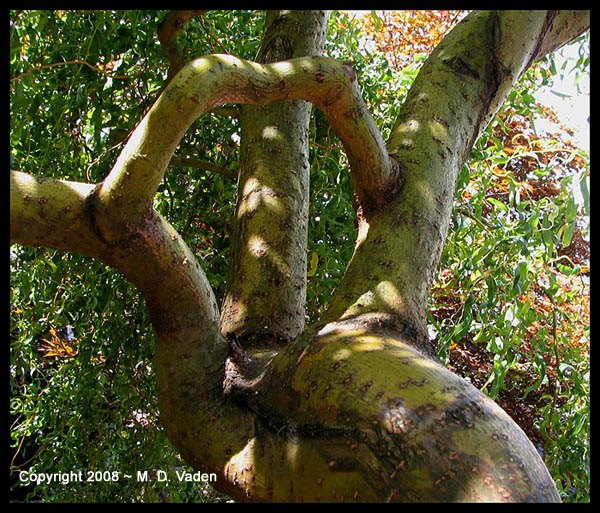
Grafted Limbs & Trunks | Inosculation
Copyright 2011 - 2020 by Mario Vaden
This is an example of limbs and branches naturally grafting without intervention by people. It is also called inosculation. This can happen in several ways: basically wherever cambium can meet cambium. Branch to branch, Root to root, Branch to trunk, Trunk to trunk. Trunk to branch to trunk
The last one I saw in the Valley of the Lost Groves at Prairie Creek redwoods, where a small branch is attached to the trunk about 8 feet above the ground and winds down like a wooden snake to about 2 feet above the soil where it is attached at its lower end.

This is not common, but not rare either. If you walked through a north Oregon neighborhood peering behind the leaves, odds are that you could spot an example within a couple of hours. This is more common with some thin barked species like Japanese maple, beech, willow or apple.
Typically, the cambium under the bark of each side needs to self-graft. This could be caused by some pressure from growth or wind rubbing bark away. Eventually, the two cambium areas merge and form a union.
In the image above, it looks like the branch grew from the limb on the left side, then rubbed and grafted to the one on the right side. These generally cause no problem. I prefer to leave them just because they look interesting.
The inosculation of branches can also provide some extra strength, like nature's way of cabling. This may be one reason that the redwood shown in National Geographic Magazine 2009, attained such a massive canopy size. Among its many stems and trunk was some natural grafting..
This is generally one plant with anther of the same species. If you see something that looks like a birch trunk grafted to an oak trunk, or a maple with a black tupelo, look carefully. The trunks will probably just be pressed or wrapped so tightly that it looks grafted, but is not.
